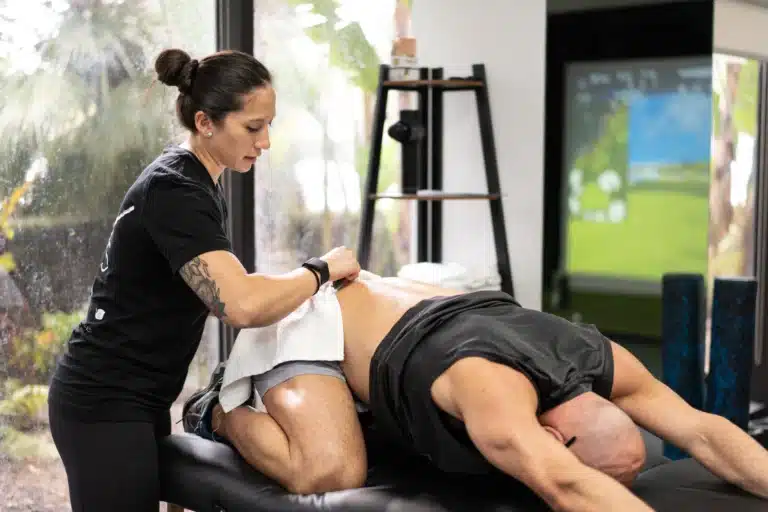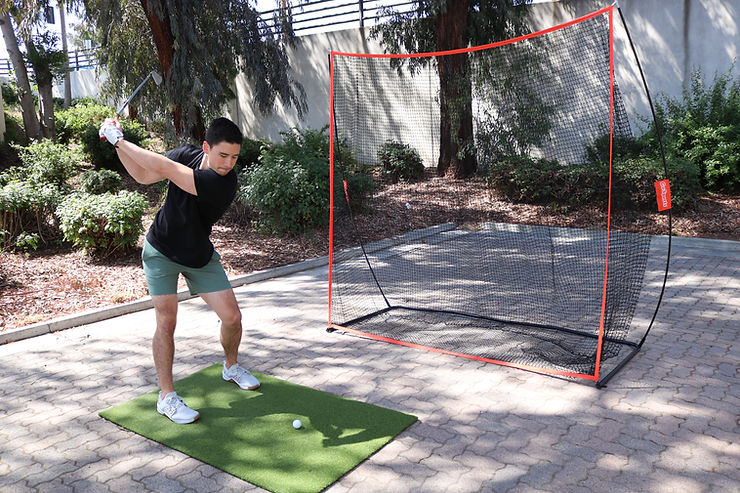Shoulder impingement syndrome is a common condition affecting millions worldwide. It is believed to be the most common cause of shoulder pain, accounting for 44% to 65% of all shoulder complaints. This discomfort often arises from the compression of the rotator cuff tendons and bursa in the shoulder joint. Proper posture and overhead arm movements can contribute to shoulder impingement, impacting daily activities. Fortunately, with appropriate physical therapy treatment, many individuals find significant relief. This blog will explore effective physical therapy exercises for shoulder impingement syndrome, helping you understand how to manage and alleviate your symptoms.
What is Shoulder Impingement?
Shoulder impingement occurs when the rotator cuff tendons and the bursa (a fluid-filled sac that reduces friction) become compressed between the shoulder bone and other structures. This compression can cause muscle pain and limit shoulder flexion. Understanding this condition is essential to developing an effective personalized treatment plan.
Causes and Risk Factors of Shoulder Impingement
Several factors can contribute to the development of subacromial impingement. Repetitive activities, such as overhead motions involved in overhead sports or heavy weights, may irritate and inflame the shoulder joint’s biceps tendon and other structures. Additionally, bony abnormalities like osteophyte formation can predispose individuals to impingement. External factors, such as anatomical variations in bone structure, such as osteophyte formation or bone spurs, can predispose specific individuals to impingement by limiting the space available for the tendons and bursa to function correctly.
Symptoms of Shoulder Impingement
Shoulder impingement symptoms often manifest as a dull or aching pain in the shoulder that may radiate down the arm. Individuals may experience a limited range of motion, making it challenging to lift their arms or reach behind their backs. Muscle strengthening and active-assisted range exercises can help improve arm function and manage these symptoms. Additionally, weakness in the shoulder and arm can occur, which may hinder daily and everyday activities. Many people also report increased discomfort at night, especially if they experience pain at night or chronic pain. If the painful shoulder persists despite conservative treatments, it might indicate a more severe underlying issue.
How Effective is Physical Therapy for Shoulder Impingement?
Physical therapy is highly effective in managing and treating shoulder impingement. It aims to reduce pain in the shoulder, improve range of motion, and strengthen the shoulder muscles to prevent recurrence. An individualized physical therapy shoulder impingement protocol can help address the role of shoulder impingement and improve functional activities. An impinging shoulder will often improve in a few weeks or months, especially with suitable treatment options and exercise bands, but it can occasionally be an ongoing problem. Through targeted exercises and therapeutic techniques, such as manual techniques and active movements, physical therapy can address the underlying causes of impingement and promote long-term shoulder function.
Precautions Before Starting Exercises

Taking certain precautions is important before starting an exercise program for shoulder impingement. First, consult a personal care team or physical therapist to ensure the exercises suit your situation. This is crucial for developing an online exercise therapy program tailored to your medical history. Begin with light weights and gentle movements, and gradually increase the intensity as your shoulder improves. Pay attention to your body; stop the activity and seek professional guidance if you experience increased pain during or after exercising. Finally, maintain proper treatment and form throughout each exercise to prevent worsening your condition.
Best Physical Therapy Exercises for Shoulder Impingement
Here are some practical physical therapy exercises for shoulder impingement syndrome designed to relieve shoulder impingement. These fundamental shoulder exercises can help improve mobility, reduce pain, and strengthen the surrounding muscles. Incorporating these exercises into your regular workout routine can be highly effective.
Shoulder Scaption Exercise
Stand with your arms at your sides to perform the Shoulder Scaption exercise. Begin by raising your arms at a 30-degree angle before you, ensuring your thumbs are pointing upward. Lift your arms until they reach shoulder height, then carefully lower them back down to the starting position. This exercise effectively engages the rotator cuff muscles and enhances overall muscle coordination and shoulder stability.
Crossover Arm Stretch
To perform the Crossover Arm Stretch, start by crossing one arm over your chest. Then, use your opposite arm to gently pull it closer to your body, holding the stretch for 20-30 seconds. This exercise enhances flexibility in the shoulder and chest muscles, including the pectoralis muscles.
Isometric Shoulder Internal and External Rotation
To perform this exercise, position your arm against a wall or door frame, starting with internal and external rotation positions. Apply pressure against the surface, holding the position for 5-10 seconds for each rotation. This exercise effectively strengthens the rotator cuff muscles while minimizing excessive movement and addressing muscle imbalances.
Side-Lying Shoulder External Rotation
To perform the Side-Lying Shoulder External Rotation exercise, lie on your side with your elbow bent at a 90-degree angle. Keeping your elbow close to your body, rotate your arm outward. Aim to complete 2 to 3 sets of 10 to 15 repetitions. This exercise is particularly beneficial for strengthening the shoulder’s external rotator cuff muscles, enhancing overall shoulder function and stability.
Shoulder Blade Squeeze
To perform the Shoulder Blade Squeeze, start sitting or standing with relaxed shoulders. Gently squeeze your shoulder blades together and hold this position for 5 seconds. Aim to repeat this exercise 10-15 times. This movement helps improve upper back strength and enhances shoulder stability, which is crucial for alleviating shoulder impingement symptoms and improving muscle coordination.
Doorway Chest Stretch
To perform the Doorway Chest Stretch, position yourself in a doorway with your arms bent at a 90-degree angle against the door frame. Slowly lean forward until you feel a gentle stretch across your chest muscles. Maintain this position for 20 to 30 seconds. This exercise effectively stretches the pectoralis muscles, alleviating shoulder tightness and improving overall shoulder mobility.
Doorway Front Shoulder Stretch
To perform the Doorway Front Shoulder Stretch, begin in a doorway with your arm raised above your head at a 90-degree angle. Gently lean forward to extend the stretch into the front shoulder area, ensuring you feel a gentle pull without any pain. Hold this position for 20 to 30 seconds. This exercise effectively targets the front of the shoulder, alleviating tightness and enhancing overall shoulder mobility.
Elastic Band Pulls
To perform the Elastic Band Pulls, secure an exercise band to a stationary object and grasp it with both hands. Keeping your elbows slightly bent, pull the band apart to engage the shoulder muscles, completing 2 to 3 sets of 10 to 15 repetitions. This exercise enhances shoulder strength and stability, making it a valuable addition to an effective rehabilitation program.
Chair Dips
Chair dips are an effective exercise for strengthening the triceps and shoulder muscles. To perform this exercise, sit on the edge of a sturdy chair with your hands beside you. Slide your buttocks off the chair and lower your body by bending your elbows, then push yourself back up to the starting position. Aim for 2-3 sets of 10-15 repetitions to build strength and improve shoulder stability.
Wall Angels
Stand flat against a wall to perform Wall Angels, positioning your arms at a 90-degree angle. Gradually move your arms up and down the wall, ensuring that your back and arms remain in contact with the surface throughout the movement. Aim for 2-3 sets of 10-15 repetitions. This exercise is beneficial for enhancing shoulder mobility and improving overall posture.
Tips for Safe and Effective Exercise
Before beginning your exercise routine, it’s crucial to warm up to prepare your muscles and joints for the activity ahead. Consistency in your exercise regimen is essential for achieving and sustaining improvements in shoulder health. Gradually increase the intensity and duration of your exercises to avoid putting excessive strain on the shoulder. Additionally, pay careful attention to maintaining proper technique throughout each movement to prevent injuries and maximize the effectiveness of your workouts.
When to Seek Medical Help for Shoulder Pain

If you experience persistent or worsening shoulder pain despite following a physical therapy program, or if you have symptoms like severe pain, swelling, or loss of function, consult a healthcare provider. Persistent pain might indicate a more severe condition or complications that require professional intervention.
Conclusion
Physical therapy plays a crucial role in managing and treating shoulder impingement. Through a combination of targeted exercises and proper care, many individuals find relief and improved function. By incorporating the exercises outlined above and following safety tips, you can work towards a healthier, pain-free shoulder. For those seeking expert guidance, The Movement Schopp offers specialized programs tailored to your needs.
FAQ’S
How many weeks of physical therapy for shoulder impingement?
The duration of physical therapy for shoulder impingement varies depending on the severity of the condition and individual progress. Typically, treatment may last from 4 to 8 weeks, with frequent sessions initially and tapering off as improvement occurs. Clinical examination findings will help determine the exact duration.
How do you exercise with shoulder impingement without equipment?
Many effective exercises for shoulder impingement can be performed without equipment, including shoulder blade squeezes, doorway stretches, and wall angels. These exercises focus on improving flexibility and strength using your body weight. For added resistance, consider exercise bands or a lacrosse ball.
Should I massage a shoulder impingement?
Massage can help with shoulder impingement by relaxing muscle tightness and reducing pain. However, it should be done gently and with a comprehensive physical therapy program. Always consult a rehabilitation specialist to ensure that massage is appropriate for your condition.




